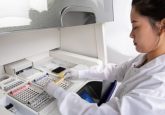Will artificial intelligence replace the automation specialist?

Artificial Intelligence (AI) is being viewed as a way to program automation in laboratories, which leaves questions about the relevance and impact of the role of automation specialists in light of advancing AI technologies. In this Expert Interview, Mike Bimson, Sales Enablement Manager for Automation and Digital for Tecan Europe, expresses why he believes AI cannot replace automation specialists.
How do automation specialists assess the quality of an automated system, both in terms of protocol and technical operation?
I like to use the phrase ‘fit for purpose’. It is often misused in many areas, but from my days developing analytic methods, it meant you had clearly defined the requirements or purpose of your work, proceeded to take the appropriate steps to meet these aims and then performed sufficient testing to show that you had indeed met the goal. Define, develop, test! As you can see, ‘fit for purpose’ is a precise definition and not simply “I think I’ve done enough work.”
Using this framework, we see the first and most difficult step to get right is part of the ‘define’ stage. Why is this the hardest? Because this is the foundation upon which everything else is built and where the biggest error is one of omission: have you really considered everything?
Often the process requirement is written in a user requirement specification or existing procedure, and it’s easy to think the job is done. However, rarely do documents alone give the full picture. One must ask numerous questions to understand the definition of a good system and how to ensure its continued operation. Questions include:
- How long will the system be in operation?
- Will it need to go through future upgrades?
- What is the experience level of the end user?
- Will there be staff turnover?
- What is the cost of a failed run?
- What is the tolerance in any given step?
These questions are just the tip of the iceberg; the list is long and varies based on instrument and purpose.
For the foreseeable future, the discernment required to intuitively understand the additional questions to ask is among the most important traits an automation specialist embodies. Once the first step of this framework has been tackled, researchers are in the best place to produce a solution by programming themselves, outsourcing to a programmer or even investigating the use of programming using artificial intelligence. However, without this translation of a working protocol into its real-world uses by automation specialists, the goal cannot be achieved. By adding these additional requirements and context, one is more likely to get something that is really ‘fit for purpose’. While AI can support this work, it is still not in a place to replace human discernment.
How is the performance of the automated system monitored?
Monitoring automated systems is not easy. It is multifaceted, and generally, the longer you monitor and the more information you capture, the better the result is. Processes that result in a measurement are generally slightly easier to monitor as long as the appropriate controls have been added. Processes that perform actions that do not lead to direct measurements require more thought.
Firstly, one must consider the actual process and, as discussed, the advantage of having measurements to evaluate. Whether tracking process variation, plate-to-plate variations, beginning- and end-of-run variation or day-to-day variation, they must be assessed according to some defined criteria (e.g., X±5%). If tracking value over time, one can run statistical analyses to identify problems. However, what does one do with processes that have no measurable output? In this case, one must investigate what there is to measure. For example, perhaps addition of a reagent cannot be monitored in the protocol. In such a case, one might consider weighing the trough of reagent before and after the run to ensure the same amount is used during each run. While this will capture if a singular transfer was missed, over time the measurement would indicate if the system was trending to dispense less. Such complexity of forethought and flexibility in thinking is currently not possible with AI solutions.
Secondly, setting the criteria to be validated before a system is run is a task where AI also lacks discernment and flexibility. This could be a simple validation of pipetting performance, a temperature check of various thermal devices or a check that the plate sealer does in fact seal the plate. Ideally, this validation process would occur before every run, but the automation specialist is best placed to make an informed decision on its frequency.
When monitoring performance, it is important to practice holistic thinking and imagination, traits that are not currently AI’s strengths. While it can be easy to set up specific criteria, perform measurements, confirm the system is performing and exclude anything else, this rarely ends well when variables arise. If a new piece of evidence enters the picture, an automation specialist will evaluate if it could be indicative of a problem that an existing monitoring process missed. I have personally walked past systems that were running fine based on the measurement data, yet I could perceive that something was wrong just by listening to the sound of the machine. Once again, AI does not have the intuition and sensory capacities of an automation specialist.
How can specialists spot errors or trends in the automated systems’ output before they become an issue?
The key to spotting errors or trends is ensuring a monitoring/logging system is in place. This could be as simple as making graphs with appropriate scales that give visuals on trends and outliers or using more complex statistical methods with confidence intervals. An automation specialist can decide how automated these logging systems should be depending on the number and type of data values without forgetting to monitor protocol error rates, error frequencies, the number of operator interventions or the number of repeated runs. Such measures should be tracked along with the operator as well as potential reagent batch numbers. AI may assist with making routines out of logging this information, but an automation specialist must carefully consider the features to be monitored from the outset.
Modern automation systems can normally be programmed to perform actions on events and errors. They can be programmed to write directly into a monitoring system, and more advanced systems even have built-in monitoring. A good system will leverage that built-in monitoring to provide real-time and comprehensive analytics with predictive insights that support the expertise of an automation specialist. This has been my personal experience with Tecan’s Introspect™ software, which does a lot of the heavy lifting of monitoring while allowing me to interpret those outputs. This is an example of how AI and human experts work together for better results.
What should automation specialists consider and do to maximize the value of the system?
The starting point is understanding the value of automation in achieving the organization’s goals. While the automation may ‘only’ be a simple protocol that runs for 30 minutes, it feeds samples into an entire process that may last months and generate 100% of a company’s revenue, so its long-term value far outweighs its perceived simplicity.
Understanding the instrument or protocol’s value from the perspective of its business impact provides a basis upon which to define what is required of it. It could be spending additional time developing a user interface requiring visual guidance and checks to minimize operator errors, building more flexibility to accommodate change from the start, building custom reports to enhance auditing or even selecting a methodology that is slower but more robust. The list of variables is almost endless but important to consider. The automation specialist is best placed to make these decisions with discernment and experience in a particular situation, requiring a flexibility and adaptability that AI cannot currently replicate.
Finally, measurements and metric are not only there to spot when something is going wrong; they can also be used to guide what can be improved or optimized. Even if the information the data provides is not useful for the current system, the knowledge gained can be used to improve the next system or the system after that.
Where do you see the role of automation specialists in the future?
When people hear ‘automation specialist’, they immediately think of programming. Over time, programming has and will continue to become more accessible to others, offering more intuitive solutions to scientists. However, automation specialists will continue to play the same role they have always played: identifying the best ways to perform a certain task and defining the task specific to the situation to best monitor that the system is not only working correctly but adding value. The support of AI and accessibility of these tasks to others will only add value over time to the role of automation specialists, as they will be stronger partners to the scientists working with the instruments.
In a world where pressure to maximize resources and investments continues to grow, automation specialists have a key role to play. Their value goes far beyond programming as their work is at the heart of good science and good business. AI is not a threat to this role; it is a tool that will help the role better support the needs that the automation specialist addresses in your lab.
Find out more about Tecan’s automation specialists and use of AI here.
About the Expert
Mike Bimson is the Sales Enablement Manager for Automation and Digital within Tecan’s European Sales Development team. In his role, Bimson works between different parties and provides field-based expertise and context on a range of projects, including individual opportunities, partnerships, business development, internal awareness training and marketing.
Bimson’s background is in analytical chemistry, spending six years in the laboratory before leaving the comforts of the bench for the field over 25 years ago. Since then, Bimson has held several customer-facing, application-focused roles spanning sales and support in laboratory automation companies such as Agilent Technologies (CA, USA) and PerkinElmer (now Revvity; MA, USA). During this time, he has automated hundreds of diverse processes.
![]()





